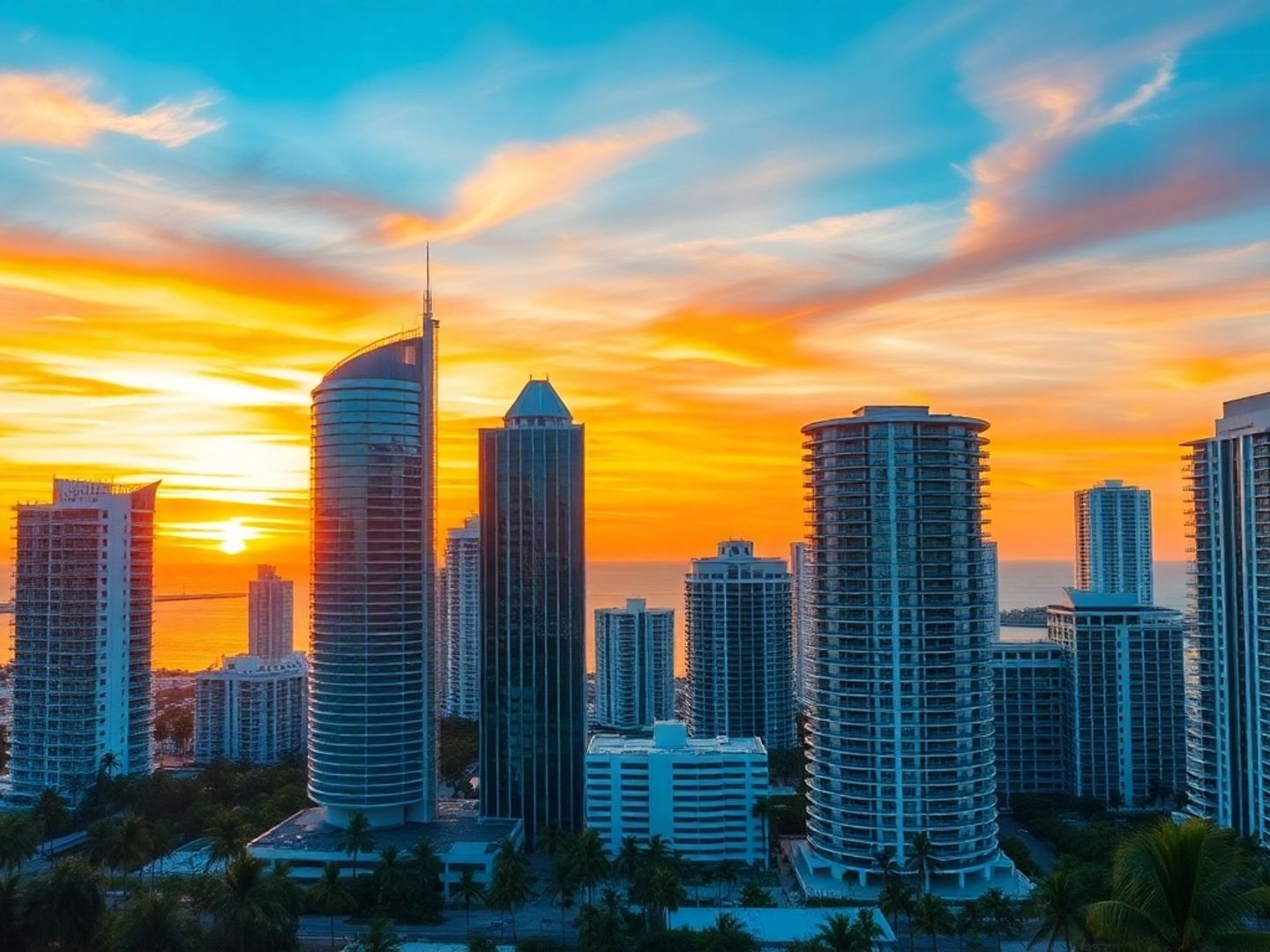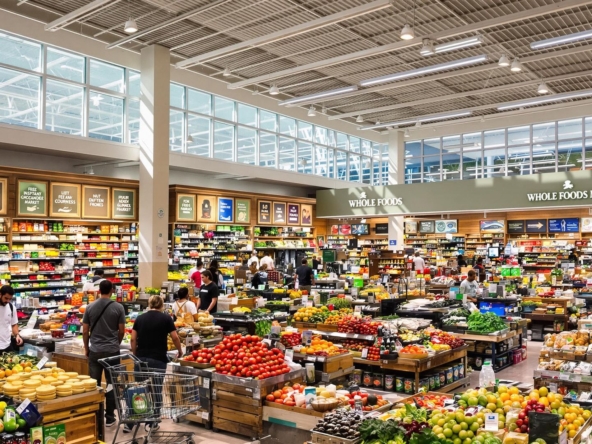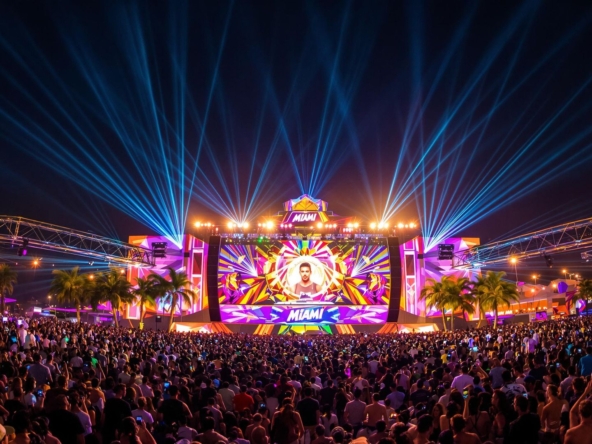Miami is not just about sun and sand; it’s also a city bursting with architectural wonders. The skyline is dotted with structures that tell stories of culture, history, and innovation. From the historic Freedom Tower to the sleek lines of modern skyscrapers, Miami’s towers reflect the city’s vibrant spirit. This guide takes you on a journey through some of the most iconic buildings in Miami, showcasing their significance and the diverse styles that shape the city.
Key Takeaways
- Miami’s skyline features a mix of historic and modern architecture, each with its own story.
- The Freedom Tower stands as a symbol of hope for many immigrants, showcasing Miami’s cultural diversity.
- Contemporary designs like One Thousand Museum highlight the innovative spirit of Miami’s architectural scene.
- Neighborhoods like Wynwood and Coconut Grove offer unique architectural experiences that reflect Miami’s artistic vibe.
- Future developments promise to enhance Miami’s skyline with sustainable and innovative designs.
Architectural Significance of Miami Towers
Cultural Impact on the Skyline
Miami’s towers aren’t just buildings; they’re statements. They reflect the city’s ambition, its embrace of art, and its constant evolution. The way these structures punctuate the skyline tells a story of a city that’s always looking forward. Think about it: each new tower changes the visual narrative, adding another layer to Miami’s identity. The Freedom Tower, for example, isn’t just architecture; it’s a symbol of hope and resilience, deeply woven into the city’s cultural fabric.
Historical Context of Design
The design of Miami’s towers is a journey through architectural history. From the Art Deco gems of the early 20th century to the sleek, modern skyscrapers of today, each era has left its mark. You can see the Mediterranean Revival style in some of the older buildings, a nod to the city’s roots. Then came the International Style, with its clean lines and minimalist aesthetic. Understanding this historical context is key to appreciating the architectural diversity of Miami.
Modern Innovations in Architecture
Miami’s skyline is a playground for architectural innovation. Buildings like One Thousand Museum push the boundaries of design with their unique exoskeletons and futuristic forms. Architects are experimenting with sustainable materials, energy-efficient systems, and designs that integrate nature into the urban environment. It’s not just about building taller; it’s about building smarter and more beautifully. The Miami Tower is a great example of modern architecture.
Miami’s architectural scene is constantly evolving, driven by a desire to create spaces that are both functional and inspiring. The city’s commitment to innovation is evident in the bold designs and cutting-edge technologies that are shaping its skyline.
Here are some trends in modern Miami architecture:
- Use of sustainable materials
- Integration of green spaces
- Emphasis on natural light
Iconic Structures Shaping Miami’s Identity
The Freedom Tower
The Freedom Tower is more than just a building; it’s a symbol. Built in 1925, it initially served as the headquarters for the Miami Daily News. Later, it became a processing center for Cuban refugees. Now, it houses the Miami Dade College Museum of Art and Design, preserving its legacy. It stands as a beacon of cultural diversity and resilience.
Miami Tower
The Miami Tower, previously known as the "SunTrust Building," is a fixture of the city skyline. Designed by I.M. Pei, its sleek design has made it a beloved landmark since 1987. The tower is illuminated by vibrant LED lights that change color, making it a beacon of innovation. You can find luxury real estate near this iconic building.
One Thousand Museum
One Thousand Museum, designed by Zaha Hadid, redefines luxury living. Completed in 2019, this residential skyscraper features a distinctive exoskeleton and panoramic views of Biscayne Bay. It’s a testament to Hadid’s vision. It’s one of the most innovative architects of the 21st century.
Miami’s skyline is a testament to the city’s spirit of innovation, diversity, and creativity. These structures represent not only architectural achievements but also the cultural and historical narratives that shape Miami’s identity.
Exploring Miami’s Diverse Architectural Styles

Miami isn’t just about beaches and nightlife; it’s a total melting pot of architectural styles. You can walk down a single street and see buildings that look like they’re from completely different eras and places. It’s what makes the city so visually interesting, and it really speaks to Miami’s history as a place where different cultures have come together.
Art Deco Influence
Okay, so everyone knows about Miami’s Art Deco. It’s practically synonymous with South Beach. But it’s not just a few pretty buildings; it’s a whole district, the Miami Beach Architectural District, and it’s the largest collection of Art Deco architecture in the world. Think pastel colors, geometric shapes, and those cool, streamlined designs. It’s like stepping back into the 1930s, but with palm trees.
Mediterranean Revival
Then you’ve got the Mediterranean Revival style, which is all about elegance and old-world charm. These buildings are often stucco-clad, with red tile roofs, arches, and courtyards. They give off a totally different vibe than the Art Deco buildings – more like you’re in Spain or Italy than Florida. They’re often found in older neighborhoods like Coral Gables, and they add a touch of sophistication to the city’s architectural landscape. If you are looking for high-end properties, you might find some gems in this style.
Contemporary Designs
And of course, Miami is always looking forward, so there’s a ton of contemporary architecture too. These buildings are all about clean lines, glass, and innovative designs. They often incorporate sustainable elements, like green roofs and energy-efficient materials. They’re a sign that Miami is a modern, forward-thinking city, and they’re constantly pushing the boundaries of what’s possible in architecture.
It’s easy to get caught up in the flash and glamour of Miami, but taking the time to appreciate the architecture is really rewarding. It tells a story about the city’s past, present, and future, and it’s a reminder that there’s more to Miami than meets the eye.
Landmarks of Downtown Miami
Brickell City Centre
Brickell City Centre is a huge, modern development. It really shows off Miami’s cosmopolitan vibe. It’s got apartments, offices, and fancy shops all in one place. They even have this cool "climate ribbon" thing to help with the heat, and lots of plants. It’s trying to be a sustainable spot in the city.
Adrienne Arsht Center
The Adrienne Arsht Center is a big deal for the arts in South Florida. It sits right on Biscayne Bay. The architect, Cesar Pelli, designed it with this copper dome that’s pretty iconic. It’s a place where you can see all sorts of performances. The Arsht Center really adds to Miami’s culture, drawing people in from everywhere. If you’re looking for performing arts, this is the place to be.
Miami Marine Stadium
While maybe not as actively used as some other landmarks, the Miami Marine Stadium is still a significant structure. It’s a unique example of modern architecture, designed for boat racing. It’s been around for a while and has a lot of history. There’s been talk about restoring it, which would be great for the city.
The stadium’s design is really something else. It’s a reminder of a different time in Miami’s history, when boat racing was a huge deal. It would be amazing to see it brought back to its former glory.
The Evolution of Miami’s Urban Landscape
From Historic to Modern
Miami’s architectural journey is a wild ride, going from quaint historic vibes to sleek, modern designs. It’s not just about new buildings popping up; it’s about how the city’s look and feel have changed over time. Think about it: you’ve got the Art Deco gems of Miami Beach, then BAM, you’re staring up at the glass giants in Brickell. It’s a total contrast, but somehow, it all works together. The city’s evolution reflects its growth and changing identity.
Sustainable Architecture Trends
Sustainability is a big deal now, and Miami’s architecture is catching on. It’s not just about looking good; it’s about being smart and eco-friendly. We’re seeing more green roofs, buildings designed to use less energy, and materials that are good for the planet. Brickell City Centre is a great example of this, with its innovative climate ribbon. It’s cool to see how new buildings are trying to minimize their impact and make Miami a greener place. Here are some trends:
- Green roofs and walls for insulation and stormwater management.
- Use of recycled and locally sourced materials.
- Energy-efficient designs to reduce carbon footprint.
Integration of Art and Design
Miami is all about art, and that definitely shows in its architecture. It’s not just about buildings; it’s about creating spaces that are visually stunning and inspiring. Think about Wynwood Walls, where street art has transformed a whole neighborhood. Or the Adrienne Arsht Center, with its striking design. Art and design are woven into the fabric of Miami’s urban landscape, making it a unique and vibrant place. The integration of art and design is evident in:
- Public art installations in parks and plazas.
- Architectural designs that incorporate artistic elements.
- Neighborhoods like Wynwood that blend art and urban redevelopment.
Miami’s architectural evolution is a reflection of its dynamic culture and forward-thinking approach. The city’s commitment to sustainability and artistic expression is shaping its urban landscape into a unique and vibrant environment.
Neighborhoods Showcasing Architectural Marvels
Wynwood’s Urban Art Scene
Wynwood is a place where art jumps off the walls and grabs your attention. What used to be warehouses are now canvases for artists from all over the world. Wynwood Walls is the heart of it all, an outdoor museum that’s constantly changing. It’s not just about the murals, though. The whole neighborhood has this creative energy that’s hard to find anywhere else. You can spend hours just wandering around, discovering new pieces and hidden gems. It’s a total transformation of a neighborhood, and it shows how art can bring new life to a place. It’s a must-see if you’re into art or just want to experience something different. The area has really become a dynamic cultural hub.
Miami Beach Architectural District
When you think of Miami Beach, you probably think of Art Deco. The Architectural District is like stepping back in time, with buildings that look like they’re straight out of a movie. The pastel colors, geometric shapes, and those little details make it so unique. Ocean Drive is the most famous street, but don’t miss the side streets. There are so many cool buildings to see. It’s not just about the buildings themselves, it’s about the whole vibe of the place. It’s glamorous, fun, and totally Miami. It’s a reminder of a different era, and it’s amazing that so much of it has been preserved. It’s a great place to take photos, people-watch, and just soak up the atmosphere. You can find some amazing luxury real estate here.
Coconut Grove’s Historic Homes
Coconut Grove is a different side of Miami. It’s got this laid-back, bohemian feel that’s totally different from the glitz of South Beach. The streets are lined with trees, and there are these amazing old homes that tell a story. It’s one of the oldest neighborhoods in Miami, and you can feel that history when you walk around. It’s a mix of different styles, from Mediterranean to Bahamian, and they all have this unique character. It’s a great place to escape the crowds and just relax. You can grab a coffee, wander through the streets, and imagine what it was like to live here back in the day. It’s a reminder that Miami has more to offer than just beaches and nightlife.
Coconut Grove is a reminder that Miami has a rich history beyond the flashy lights and modern buildings. It’s a place where you can slow down, appreciate the beauty of nature, and connect with the past.
Future Developments in Miami’s Skyline

Miami’s skyline is ever-changing, a constant dance of innovation and design. As the city continues to grow, so too does its architectural ambition. Let’s take a peek at what’s on the horizon.
Upcoming Projects
There’s a buzz about several new developments set to reshape Miami’s skyline. These projects promise to bring fresh perspectives and push the boundaries of architectural design. Keep an eye out for:
- New residential towers focusing on luxury and sustainability.
- Mixed-use developments that blend living, working, and recreational spaces.
- Public spaces designed to enhance community engagement and outdoor experiences.
Innovative Architectural Concepts
Miami is becoming a playground for architects eager to experiment with cutting-edge concepts. We’re seeing a rise in:
- The use of parametric design to create fluid and organic forms.
- Exploration of new materials that are both durable and environmentally friendly.
- Integration of smart technologies to enhance building performance and user experience.
The future of Miami architecture is about more than just building tall; it’s about creating spaces that are responsive to the environment, enhance the quality of life for residents, and contribute to the city’s unique identity.
Sustainability in Urban Planning
Sustainability is no longer an option but a necessity in Miami’s urban planning. New projects are prioritizing:
- Energy efficiency through the use of renewable energy sources and passive design strategies.
- Water conservation measures, including rainwater harvesting and greywater recycling.
- Green building certifications, such as LEED, to ensure environmental performance. For example, Brickell City Centre is a great example of sustainable urban development.
Here’s a look at some projected green initiatives:
| Initiative | Description |
|---|---|
| Green Roofs | Implementing vegetation on rooftops to reduce heat island effect. |
| Solar Panel Arrays | Integrating solar panels into building designs for renewable energy generation. |
| Electric Car Charging | Providing charging stations to promote the use of electric vehicles. |
Miami’s skyline is changing fast! New buildings are popping up, making the city even more exciting. With modern designs and tall towers, the skyline will look amazing in the coming years. If you want to stay updated on these changes and find the best properties in Miami, visit our website today!
Final Thoughts on Miami’s Architectural Wonders
Miami’s skyline is more than just a collection of buildings; it’s a story of culture, creativity, and resilience. Each tower and landmark reflects the city’s unique spirit and history. Whether you’re wandering through the Art Deco District or gazing up at the sleek lines of modern skyscrapers, there’s always something new to discover. So, next time you’re in Miami, take a moment to appreciate these architectural gems. They’re not just structures; they’re a part of what makes this city so special.
Frequently Asked Questions
What are the most famous towers in Miami?
Some of the most famous towers in Miami include the Freedom Tower, Miami Tower, and One Thousand Museum.
What architectural styles can be found in Miami?
Miami features a variety of architectural styles such as Art Deco, Mediterranean Revival, and modern contemporary designs.
Why is the Freedom Tower important?
The Freedom Tower is important because it symbolizes hope and freedom for immigrants, especially Cuban refugees, and it houses a museum today.
What is Brickell City Centre?
Brickell City Centre is a large mixed-use development in downtown Miami that includes shops, offices, and residential spaces.
Who designed the Adrienne Arsht Center?
The Adrienne Arsht Center was designed by architect Cesar Pelli and is a major venue for performing arts in South Florida.
What is Wynwood known for?
Wynwood is known for its vibrant street art and murals, making it a popular spot for art lovers and visitors.



